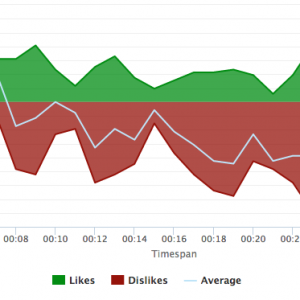Exploring Examples of Quantitative Studies

Quantitative research is an important aspect of the scientific study of phenomena. It involves the use of mathematical and statistical tools to measure and analyze data. Understanding quantitative research and its various types is crucial for researchers interested in conducting empirical studies in different fields of study. This article will explore the different types of quantitative studies, their key characteristics, and data collection and sampling techniques used in them.
Understanding Quantitative Research
Definition and Purpose
Quantitative research is a systematic empirical investigation that uses mathematical and statistical tools to study phenomena. The purpose of quantitative research is to describe, predict, and explain phenomena by studying the relationships between variables or groups of variables. Quantitative research is objective, systematic, and structured in its approach, and often uses a deductive reasoning approach.
Quantitative research is used in a variety of fields, including social sciences, psychology, economics, and marketing. For example, a marketing firm may use quantitative research to study consumer behavior and preferences in order to develop more effective advertising campaigns. In psychology, quantitative research may be used to study the effects of different treatments on mental health outcomes.
Key Characteristics
Quantitative research has several key characteristics that distinguish it from other types of research. Firstly, it is quantitative in nature, meaning that it involves the collection and analysis of numerical data. This data is often collected through surveys, experiments, or other structured methods. Secondly, it is structured, meaning that it follows a predetermined set of procedures and methods. This helps to ensure that the data collected is reliable and valid. Thirdly, it is objective, meaning that it seeks to avoid bias and subjective interpretations of data. Researchers strive to be impartial and avoid letting their personal beliefs or opinions influence the research findings. Finally, it is generalizable, meaning that the findings can be applied to a wider population beyond the study sample. This allows researchers to draw broader conclusions about the phenomena being studied.
Quantitative vs. Qualitative Research
Quantitative research differs from qualitative research in several ways. Firstly, qualitative research focuses on exploring and understanding human experiences and is often more subjective in its approach. In contrast, quantitative research focuses on measuring and analyzing data and is more objective in its approach. Secondly, qualitative research often involves small sample sizes and open-ended questions, while quantitative research often involves larger sample sizes and closed-ended questions. This allows for more precise measurement of variables and statistical analysis of the data. Finally, qualitative research is often used to generate new ideas and theories, while quantitative research is often used to test hypotheses and theories. Both types of research have their strengths and weaknesses, and researchers often use a combination of both approaches to gain a more complete understanding of the phenomena being studied.
In conclusion, quantitative research is a valuable tool for investigating phenomena in a systematic and objective way. By collecting and analyzing numerical data, researchers can describe, predict, and explain a wide range of phenomena across a variety of fields. Understanding the key characteristics of quantitative research and how it differs from qualitative research can help researchers choose the most appropriate approach for their research questions and goals.
Types of Quantitative Studies
Quantitative research is a type of research that involves the collection and analysis of numerical data. It is used to test hypotheses, identify patterns, and make predictions about a population. There are several types of quantitative studies, each with its own unique characteristics and applications.
Experimental Research
Experimental research is a type of quantitative research that involves the manipulation of one or more independent variables to observe the effect on a dependent variable. It is considered the most rigorous form of quantitative research because it involves the use of control groups, random assignment, and systematic procedures to ensure the validity and reliability of the findings.
Examples of experimental research include drug trials, educational interventions, and psychological experiments. In a drug trial, for example, participants may be randomly assigned to receive either the experimental drug or a placebo. The researchers can then compare the outcomes of the two groups to determine the effectiveness of the drug.
Non-Experimental Research
Non-experimental research is a type of quantitative research that does not involve the manipulation of independent variables. Instead, it involves the observation and measurement of naturally occurring variables in different settings.
Examples of non-experimental research include surveys, case studies, and correlational studies. In a survey, for example, participants may be asked to answer a series of questions about their opinions or behaviors. The researchers can then analyze the responses to identify patterns or trends.
Descriptive Research
Descriptive research is a type of non-experimental research that involves the observation and measurement of variables without any manipulation of independent variables. It is used to describe characteristics of a population, such as demographics, behavior, and attitudes.
Examples of descriptive research include cross-sectional studies, trend studies, and case studies. In a cross-sectional study, for example, data is collected from a sample of participants at a single point in time. The researchers can then analyze the data to identify patterns or relationships.
Correlational Research
Correlational research is a type of non-experimental research that involves the measurement of the relationship between two or more variables. It does not involve the manipulation of independent variables but instead focuses on the identification of associations between variables.
Examples of correlational research include surveys, observational studies, and cohort studies. In an observational study, for example, researchers may observe the behavior of participants in a natural setting. They can then analyze the data to identify patterns or relationships between variables.
Overall, quantitative research is a powerful tool for understanding and predicting behavior in a population. By utilizing different types of quantitative studies, researchers can gain a more comprehensive understanding of the relationships between variables and make informed decisions based on their findings.
Data Collection Methods in Quantitative Studies
When conducting quantitative research, it is important to have a solid understanding of the different data collection methods available. Each method has its own strengths and weaknesses, and selecting the appropriate method for your study can greatly impact the quality and accuracy of your results.
Surveys and Questionnaires
Surveys and questionnaires are one of the most widely used methods for collecting data in quantitative research. They are a cost-effective way to collect data from a large number of participants and can be administered in person, over the phone, or online. Surveys and questionnaires typically consist of a standardized set of questions that are designed to collect data on attitudes, beliefs, behaviors, and demographics. They are often used in cross-sectional and longitudinal studies to examine trends over time. However, it is important to note that surveys and questionnaires are limited by the quality of the questions asked and the accuracy of the responses provided by participants.
Structured Interviews
Structured interviews are another method for collecting data in quantitative research. They involve the use of a predetermined set of questions to collect data from participants. Structured interviews are often used to collect data on topics that are difficult to quantify, such as personal experiences, emotions, and attitudes. They are commonly used in case studies and qualitative research. However, structured interviews can be time-consuming and may not be suitable for large-scale studies.
Observations and Measurements
Observations and measurements involve the direct observation and recording of behavior or events. They are often used in experimental research to assess the effect of independent variables on dependent variables. Observations and measurements are also used in non-experimental research to collect data on behavior and other variables. This method is particularly useful when studying behaviors that are difficult to self-report, such as physical activity or eating habits. However, this method can be time-consuming and may require significant resources.
Secondary Data Analysis
Secondary data analysis involves the use of existing data sources to conduct research. This method involves the secondary analysis of data that was collected for other purposes, such as governmental databases or academic studies. Secondary data analysis is often used in descriptive and correlational studies. This method can be cost-effective and time-efficient, but it is important to ensure that the data is relevant and reliable for your research question.
Overall, selecting the appropriate data collection method for your quantitative research study requires careful consideration of the strengths and weaknesses of each method, as well as the research question and available resources.
Sampling Techniques in Quantitative Research
Sampling is an essential part of any quantitative research study. It involves selecting a subset of individuals or objects from a larger population to participate in the study. The goal of sampling is to obtain a representative sample that accurately reflects the characteristics of the population being studied.
Probability Sampling
Probability sampling is a sampling technique that involves randomly selecting participants from a larger population. This ensures that each participant has an equal chance of being selected, which increases the representativeness and generalizability of the findings. Probability sampling is often used in quantitative research studies because it allows researchers to make statistical inferences about the population based on the sample.
There are several types of probability sampling techniques. Simple random sampling is the most straightforward method, where each member of the population has an equal chance of being selected. Stratified sampling involves dividing the population into subgroups based on specific characteristics, such as age or gender, and then randomly selecting participants from each subgroup. Cluster sampling involves dividing the population into clusters, such as neighborhoods or schools, and then randomly selecting clusters to participate in the study.
Probability sampling is considered the gold standard of sampling techniques because it minimizes bias and increases the accuracy of the findings. However, it can be time-consuming and expensive to implement, especially when the population is large or geographically dispersed.
Non-Probability Sampling
Non-probability sampling is a sampling technique that does not involve random selection of participants. Instead, the sample is selected based on criteria other than random selection, such as convenience or availability. Non-probability sampling is often used in qualitative research and exploratory studies.
There are several types of non-probability sampling techniques. Convenience sampling involves selecting participants who are readily available, such as students in a classroom or customers in a store. Purposive sampling involves selecting participants who meet specific criteria, such as individuals with a particular disease or employees with a specific job title. Snowball sampling involves asking participants to refer other individuals who meet the criteria for the study.
Non-probability sampling is less rigorous than probability sampling and is more susceptible to bias. However, it can be a useful method when the population is difficult to define or access, or when the research question is exploratory in nature.
Conclusion
Quantitative research is an important tool for studying phenomena in different fields of study. Understanding the different types of quantitative research, their key characteristics, and data collection and sampling techniques is crucial for researchers interested in conducting empirical studies. By understanding these concepts, researchers can develop hypotheses, design studies, collect data, and analyze results in a systematic, objective, and rigorous way.







